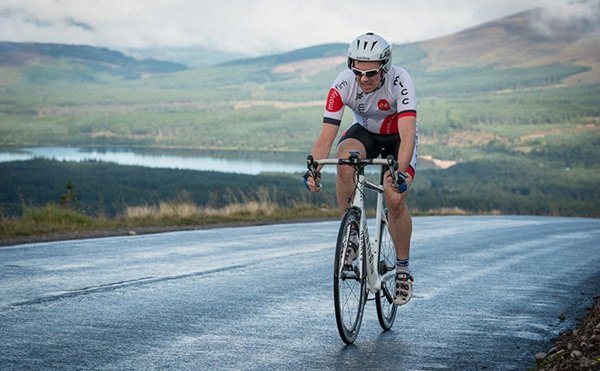Climb Like A Mountain Goat
This three-stage hill attack method will have you conquering every climb you ride.
This three-stage hill attack method will have you conquering every climb you ride. – By Selene Yeager

Kick It up the Climb
They say there are many ways up a mountain, which is a good philosophy for cresting climbs on your bike as well as in life. You can sit, you can stand, you can spin, you can jam—it all depends on the grade and length of the climb. And because no hill is exactly the same, the best hill-training workout conditions your body to be ready for whatever the terrain tosses your way.
Read: 5 Surprising Tricks To Conquer A Climb
That means improving your muscular endurance to withstand the sustained wattage output long climbs demand, boosting lactate threshold so you can maintain harder efforts without blowing up, and building your aerobic engine so you can keep your cadence relatively high to avoid frying your muscle fibers with undue stress. Easy right?
Nope. But it’s not supposed to be. Your workouts should be hard—stupid hard. That way, when you’re out on the road, it’s that much easier to fly up the mountain any which way you like. The following Three-Stage Hill Attack Plan targets all your climbing muscles and energy systems. If you’re new to riding intervals, go through it just one time. After a couple of weeks, you can add another round. If you’re already an interval veteran, you can jump in and do two sets out of the gate.
These are best performed on a steady climb that’s about 5- to 8-percent grade. Always warm up for at least 10 to 15 minutes beforehand. Do these intervals once or twice a week on fresh legs.
Stage One: Sit and Spin
This part of the workout helps develop your aerobic capacity, so you can rely your cardiovascular system to climb instead of muscling your way to the top, which fatigues you faster.
Do It:
1. Shift into a gear that allows you to spin at a relatively high cadence (aiming for about 90rpm, if possible). Maintain that cadence for five minutes at an effort level of 8 on a 1-to-10 rating of perceived exertion (RPE) difficulty scale—the point at which your breathing is riding the border between ‘hard and even’ and ‘labored and gasping.’
2. Recover for three to four minutes.
3. Move to the next interval. (Gradually extend the time of the interval until you are maintaining it for 10 to 12 minutes).
Stage Two: Power Surge
The punchy nature of climbs often pops riders because it forces them into the red without adequate recovery. This interval helps to develop more power at your threshold, so you’ll be better conditioned to handle changes in pitch and intensity.
Do It:
1. Start climbing at an intensity that is just under your threshold (RPE: 8).
2. After 3 minutes, push your pace/intensity so you’re right at threshold (RPE: 9).
3. After 2 minutes, push your pace so you’re above threshold (RPE: 10). Hold for 1 minute.
4. Recover 5 to 6 minutes and move to the next interval.
Stage Three: Full-Throttle Charge
There are times you need a bit of turbo boost to power through a steep switchback, crest a climb without getting dropped by the group or to beat your buddies to the top. These max-effort drills accomplish that.
Do It:
1. Climb at a pace that is just about threshold (RPE: 8 to 9).
2. When you’re ready, attack and push as hard as you can for 10 to 20 pedal strokes (about 10 to 20 seconds).
3. Back down and recover for 10 to 20 seconds.
4. Repeat 4 more times.
5. Recover 10 minutes and repeat the intervals from the top, if you’re so inclined.
READ MORE ON: hills Skills training programmes

